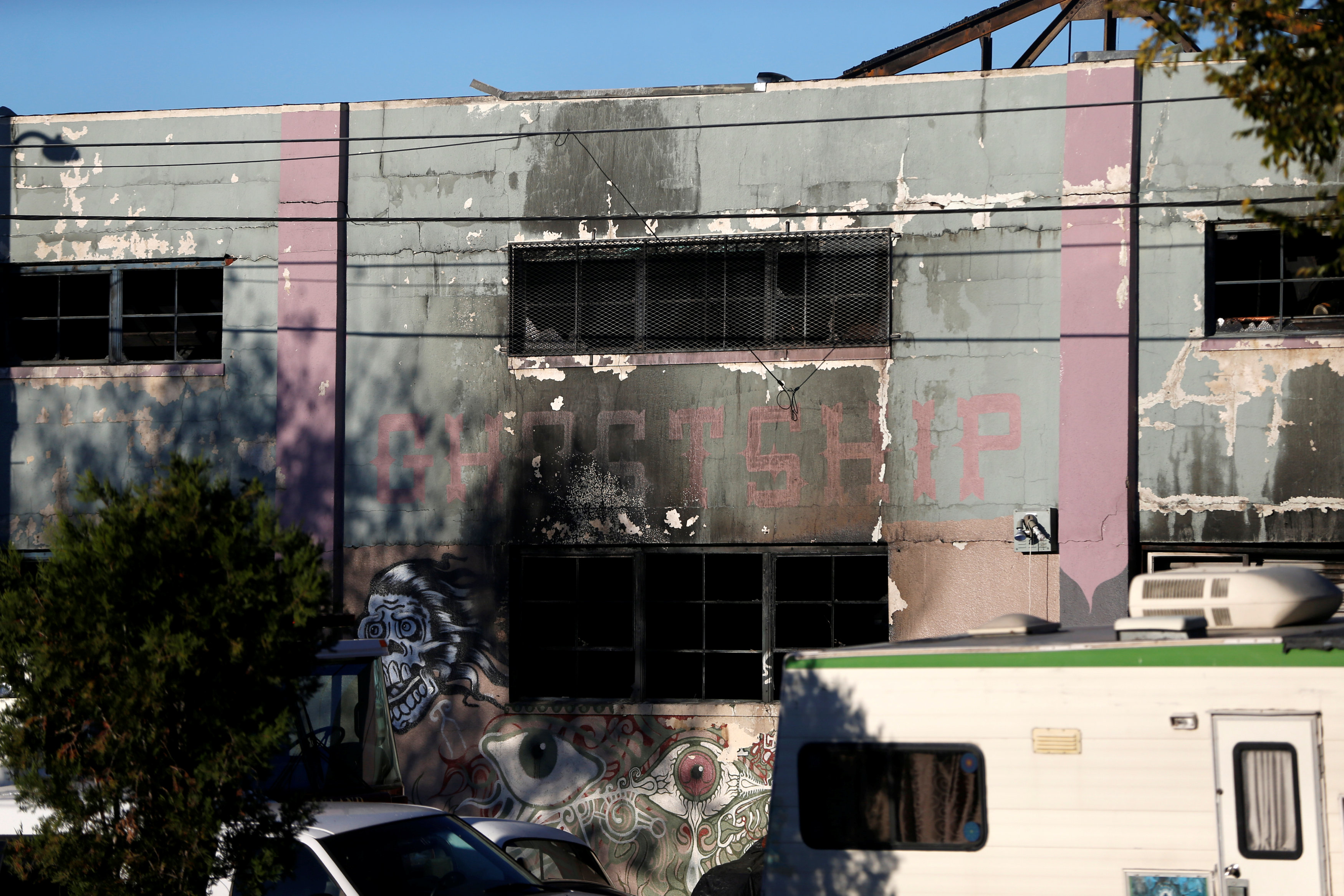
By Curtis Skinner and Peter Henderson
OAKLAND, Calif. (Reuters) – The death toll rose to 36 on Monday from a blaze that engulfed a converted warehouse during a dance party in Oakland, California, the greatest loss of life from a U.S. fire in over a decade, as searchers sifted charred ruins being treated as a crime scene.
Authorities said they were certain to find more bodies in the gutted building and were still trying to account for about 50 people reported missing by loved ones, while ruling out any drastic climb in the tally of deaths.
“If you have a best friend out there, please hug your best friend,” Franchesca Dickerson, a 21-year old hairdresser, told a candlelight vigil, as she held a collage of images of a friend who died in the blaze.
“I’d give 50,000 years to hug mine,” added Dickerson, who was to have joined her childhood friend, 19-year old Michalea Gregory, at the party, but changed plans because of work.
The cause of the fire, which erupted late on Friday in a sprawling two-story building leased to an artists’ collective, has yet to be determined.
Officials have said arson was not immediately suspected. But charges ranging from involuntary manslaughter to murder could feature in a potential criminal case, Alameda County District Attorney Nancy O’Malley told a news conference.
Possible safety violations were expected to be one aspect of the investigation, with city officials having said the site was already under investigation for reports of illegal construction.
Investigators from the U.S. Bureau of Alcohol, Tobacco, Firearms and Explosives identified an “area of interest” on the ground floor that was still out of reach, said Sergeant Ray Kelly, a spokesman for the Alameda County Sheriff’s Office.
He described the spot as being at the rear of the warehouse, where makeshift studios and cubicles were clustered.
O’Malley said fire investigators and a task force from her office were working with recovery teams inside the wreckage to preserve any potential criminal evidence as they seek signs of victims and clues to the origin of the blaze.
Debris was being removed “bucket by bucket,” said Deputy Fire Chief Darren White, but a large construction crane at the scene required nearby electricity lines to be shut down for several hours, as a precaution.
FIRE HAZARDS
The nature of the fire has raised questions about possible building code violations. City officials have said the warehouse, known as the Ghost Ship, was already under scrutiny, with an inspector having visited on Nov. 17.
Municipal authorities also cited reports of people living in the structure, although it was barred to residential use. Some of those who entered the warehouse called it a potential fire trap.
The first floor, housing an artist cooperative, the Satya Yuga Collective, was a warren of partitioned studio spaces and rooms crammed with furniture, musical instruments and rugs, according to survivors, city officials and photographs posted on social media before the fire.
Two recreational vehicles believed to have been used as living quarters and work space were found parked on the ground floor inside, Kelly said.
The dance party was held on the second floor, which partially collapsed when the roof gave way. Survivors said flames spread quickly and billowing thick, black smoke blinded and choked those struggling to flee.
The 10,000-square-foot (929-sq-m) building lacked sprinklers or smoke detectors, and wooden pallets partially formed a makeshift stairway between first and second floors, officials said. It had just two exterior doorways.

Nancy Pike, 60, (L) and William Anderson, 3, put flowers at a sidewalk memorial near the burned warehouse following the fatal fire in the Fruitvale district of Oakland, California, U.S. December 5, 2016. REUTERS/Lucy Nicholson
YOUNG VICTIMS
The recovery of three more bodies took the confirmed death count to 36, making the blaze the deadliest in the United States since 100 people perished in a 2003 nightclub fire in West Warwick, Rhode Island.
“We absolutely believe that the number of fire fatalities will increase,” Oakland Fire Battalion Chief Melinda Drayton told reporters. But Sheriff Gregory Ahern later said he was “not anticipating any more huge numbers” of victims.
By Monday afternoon, 33 of the dead had been identified and authorities were notifying families, said Ahern, adding that three victims were from Finland, South Korea and Guatemala.
Most victims had been in their 20s and 30s, but some were younger, officials said. The site was known as a “safeplace” haven for young members of the city’s lesbian, gay, bisexual and transgender community, Kelly said.
With many bodies burned beyond recognition, families were asked to preserve items that might contain DNA to help identification. Kelly said some people died of smoke inhalation.
Officials were unsure of the numbers present when the fire erupted. One survivor has estimated them at 60 to 70.
The warehouse was one of many converted lofts on the east end of San Francisco Bay in Oakland’s Fruitvale neighborhood, a mostly Latino district where rents are typically lower than elsewhere.
(Additional reporting by Laila Kearney in New York, Timothy McLaughlin in Chicago, Deborah Todd in Oakland and Sharon Bernstein in Sacramento, Calif.; Writing by Daniel Wallis and Steve Gorman; Editing by Lisa Shumaker and Peter Cooney)














